The Great Resignation
description: a trend of a significant number of workers resigning from their jobs, especially noticeable in the wake of the COVID-19 pandemic
14 results
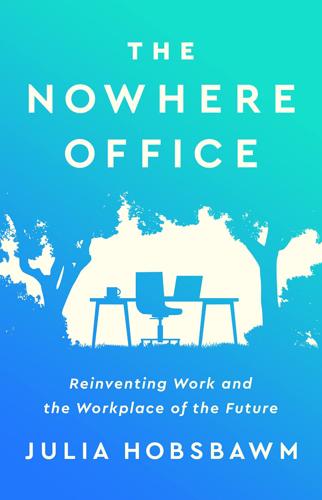
The Nowhere Office: Reinventing Work and the Workplace of the Future
by
Julia Hobsbawm
Published 11 Apr 2022
World Health Organisation, ‘Mental Health and Substance Use: Mental Health in the Workplace’, https://www.who.int/teams/mental-health-and-substance-use/promotion-prevention/mental-health-in-the-workplace; see also ‘What a Work-From-Home Revolution Means for Commercial Property’, The Economist, 5 June 2021, https://www.economist.com/finance-and-economics/2021/06/03/what-a-work-from-home-revolution-means-for-commercial-property 5. See ‘The Great Resignation: Why People Are Leaving Their Jobs in Growing Numbers’, NPR, 22 October 2021, https://www.npr.org/2021/10/22/1048332481/the-great-resignation-why-people-are-leaving-their-jobs-in-growing-numbers; US Bureau of Labor Statistics, ‘Job Openings and Labor Turnover Summary’, 12 October 2021, https://www.bls.gov/news.release/jolts.nr0.htm?utm_source=npr_newsletter&utm_medium=email&utm_content=20211018&utm_term=5879628&utm_campaign=money&utm_id=4858467&orgid=&utm_att1=money 6.
…
‘Autonomy in the Workplace Has Positive Effects on Well-Being and Job Satisfaction, Study Finds’, University of Birmingham, 24 April 2017, https://www.birmingham.ac.uk/news/latest/2017/04/autonomy-workplace.aspx 11. See ‘The Great Resignation: Why People Are Leaving Their Jobs in Growing Numbers’, NPR, 22 October 2021, https://www.npr.org/2021/10/22/1048332481/the-great-resignation-why-people-are-leaving-their-jobs-in-growing-numbers; EY Study, ‘More Than Half of Employees Globally Would Quit Their Jobs if Not Provided Post-Pandemic Flexibility’, 21 May 2021, https://www.ey.com/en_ro/news/2021/05/ey-study--more-than-half-of-employees-globally-would-quit-their- 12.
…
The World Health Organisation (WHO) estimates that depression and anxiety alone cost the global economy $1 trillion every year.4 The pandemic lifted the lid on a desire to work differently, or less, or with more work–life balance. We can see the impact of this in every metric around work: from ‘The Great Resignation’ in which millions of American workers resigned en masse and the one in four workers who now imagine they might quit or switch jobs,5 to the reduction in corporate property rents by as much as 10 per cent with huge changes in the use of office space, co-working space and fixed-lease space.6 The city has a new competitor: the suburb.

Make Your Own Job: How the Entrepreneurial Work Ethic Exhausted America
by
Erik Baker
Published 13 Jan 2025
New York Times, February 15, 2022. 46Buffybabe, “I Want to Be an Entrepreneur So I Can Escape,” Reddit post, https://www.reddit.com/r/antiwork/comments/zf5s8x/i_want_to_be_an_entrepreneur_so_i_can_escape/; Anon., “antiwork views on entrepreneurship and starting your own business?” Redditt post, https://www.reddit.com/r/antiwork/comments/xkrey6/antiwork_views_on_entrepreneurship_and_starting/. 47Vera Gibbons, “‘The Great Resignation’ Is Creating More Entrepreneurs, Side Hustlers, and Freelancers,” Yahoo News, November 8, 2021; Martha C. White, “The Flip Side of the ‘Great Resignation’—A Small-Business Boom,” NBC News, December 30, 2021; “Is the Great Resignation Giving Rise to the Entrepreneur?” Knowledge@Wharton, October 25, 2021. 48Daisy Jones, “Yes, the Girlboss Is Dead—But Her Replacement Isn’t So Great, Either,” Vogue, August 10, 2023. 49Tom Hodgkinson, Business for Bohemians: Live Well, Make Money (New York: Abrams Press, 2018).
…
A whopping four million Americans resigned in July 2021, even as the official unemployment rate remained significantly elevated above pre-crisis levels. Soon a label materialized for the quit wave, and the “Great Resignation” became one of the year’s great media causes célèbres. By the end of the year some forty-seven million Americans had resigned.44 One additional omen, a touchstone of media coverage of the Great Resignation, was the dramatic growth in the online community r/antiwork, a forum on the platform Reddit. Founded amidst the Occupy Wall Street protests of the early 2010s, r/antiwork membership skyrocketed in the early years of the pandemic, eventually becoming one of the most heavily trafficked communities on Reddit.45 And yet the entrepreneurial work ethic has weathered the storm surprisingly well.
…
Long Live the Girlboss,” The Cut, August 31, 2021. 41Heather Berg, Porn Work: Sex, Labor, and Late Capitalism (Chapel Hill: University of North Carolina Press, 2021), 2. 42Mukhopadhyay, “The Girlboss Is Dead”; Maggie McGrath and Alexandra Sternlicht, “Why Female Entrepreneurs Welcome the End of the Girlboss Era—Once and for All,” Forbes, June 28, 2022; Sophia Amoruso, tweet: “Please stop using the word Girlboss thank you,” June 1, 2022, https://twitter.com/sophiaamoruso/status/1532092221654126592 43The Editors, “The Feminism We Need,” Lux 1 (Spring 2021). See also Meltzer, Glossy, part 3. 44Joseph Fuller and William Kerr, “The Great Resignation Didn’t Start with the Pandemic,” Harvard Business Review, March 23, 2022; Ian Cook, “Who Is Driving the Great Resignation?” Harvard Business Review, September 15, 2021. 45Taylor Nicole Rodgers, “Reddit ‘Antiwork’ Forum Booms as Millions of Americans Quit Jobs,” Financial Times, January 9, 2022. See also Oliver Whang, “Hating Your Job Is Cool. But Is It a Labor Movement?”

Essential: How the Pandemic Transformed the Long Fight for Worker Justice
by
Jamie K. McCallum
Published 15 Nov 2022
Stories from the trenches of the service economy illuminate another dimension to labor shortage hysteria: not only were employers having a hard time hiring the unemployed, workers who had jobs were quitting like crazy. It wasn’t just restaurants. In April 2021 alone, retail establishments lost 650,000 workers and nursing facilities shed 20,000 care workers, the result of a historic quit wave that came to be known as the “Great Resignation.” In July, that record was broken. In August, it was broken again, when a total of 4.3 million people left their jobs.16 It kept rising to 4.5 million quits in November 2021, about 3 percent of the entire workforce. The popular impression was that American workers were taking cues from the original slacker himself, Bartleby the scrivener, Herman Melville’s recalcitrant low-level clerk who, when told repeatedly to work, responded simply, “I would prefer not to.”
…
It’s possible that slowed flows of migrants were causing shortages in certain industries, but Biden had reversed Trump’s ban on legal migration, allowing people to cross borders to work. Some people were forced out of jobs by refusing to comply with vaccine mandates, but that wouldn’t be a prime cause of such a huge worker shortage. Two other explanations, however, are more interesting. The first is that the Great Resignation was partly the result of a Great Reassessment. Liberals heralded the idea that the pandemic prompted a sweeping reconsideration of the role of work in our lives. The alleged conclusion reached by many was that wages aren’t high enough, work isn’t good enough, and our limited time on this burning planet shouldn’t be spent in a cubicle or some other dead-end job, lest we shuffle off this mortal coil while clearing out our in-box.
…
In the absence of a powerful workers’ movement to help turn that resignation into organization, quitting belied labor’s historic weakness. On the other hand, the persistent labor shortage also meant workers enjoyed a moment of greater leverage over employers who were short-staffed. With workers harder to replace, labor seemed to be taking advantage of the bosses’ crisis. The Great Resignation helped fuel the Great Discontent. As a labor activist myself, I’ll admit that waking up each morning to new reports of workers on strike brought me much joy. Yet the labor historian in me had to square the current moment with the uprisings of the past. In the late nineteenth century, massive, unruly strikes brought entire industries to a halt.
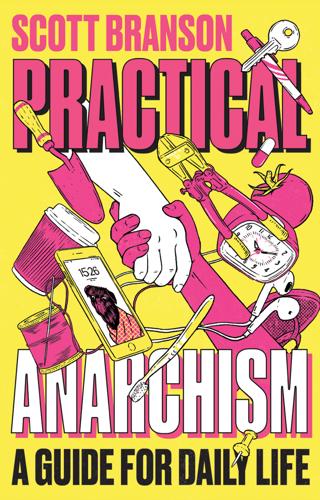
Practical Anarchism: A Guide for Daily Life
by
Scott. Branson
Published 14 Jun 2022
For many, the pandemic precarity wasn’t new, just a solidified version of a long-term experience: tinder that needed a spark. On a hopeful note, the authors of the essay, “The Interregnum: The George Floyd Uprising, the Coronavirus Pandemic, and the Emerging Social Revolution,” argue that the phenomena after the uprising of the “Great Resignation,” which they rename the “Great Refusal,” of people giving up their low-paid, pointless jobs, was a furthering of the revolutionary fervor of the rebellion into more aspects of our daily life. They argue that moving from a questioning of police and prisons to a refusal to work generalizes the rebellion to the everyday, helping move the “political revolution,” which still risks being contained by the state and authoritarian leftist parties, towards a “social revolution,” which threatens to destroy the hierarchies of society as we know it.
…
They argue that moving from a questioning of police and prisons to a refusal to work generalizes the rebellion to the everyday, helping move the “political revolution,” which still risks being contained by the state and authoritarian leftist parties, towards a “social revolution,” which threatens to destroy the hierarchies of society as we know it. The important note here is that the Great Resignation or Refusal has happened, worldwide, outside of the normal channels of labor organizing, in a spontaneous yet still concerted way. Repurpose Your Work Life We are taught from a young age to find work that will make us happy, but work can’t make us happy in this system. Thus, we should give up that impossible dream.
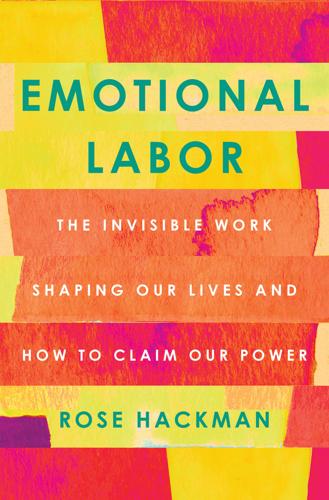
Emotional Labor: The Invisible Work Shaping Our Lives and How to Claim Our Power
by
Rose Hackman
Published 27 Mar 2023
Dolan (ed.), Chase Peterson-Withorn (deputy ed.), and Jennifer Wang (deputy ed.), “The Forbes 400 2021,” Forbes, accessed February 7, 2022, https://www.forbes.com/forbes-400/. 12. “A Profile of the Working Poor, 2016,” BLS Reports, US Bureau of Labor Statistics, July 2018, accessed June 16, 2020, https://www.bls.gov/opub/reports/working-poor/2016/home.htm. 13. “The Great Resignation: Why People Are Leaving Their Jobs in Growing Numbers,” NPR.org, October 22, 2021, accessed February 12, 2022, https://www.npr.org/2021/10/22/1048332481/the-great-resignation-why-people-are-leaving-their-jobs-in-growing-numbers. 14. “Men Have Now Recouped Their Pandemic-Related Labor Force Losses While Women Lag Behind,” National Women’s Law Center, February 4, 2022, accessed February 12, 2022, https://nwlc.org/resource/men-recouped-losses-women-lag-behind/. 15.

Making It in America: The Almost Impossible Quest to Manufacture in the U.S.A. (And How It Got That Way)
by
Rachel Slade
Published 9 Jan 2024
Over four hours, just four job-seekers showed up. “There’s certainly not a workforce in America that wants to come to American Roots and start at $17 an hour with benefits and work their way up to $20 or $21 an hour and be a part of this right now,” Ben said. “We don’t have that. There’s no desire.” The media called it the Great Resignation. Ben called it apocalyptic. “It has nothing to do with people staying home collecting unemployment,” he said. “Something else happened. I think Americans are tired. I think they’re tired of the cost of groceries. I think they’re tired of the cost of child care. I think they’re tired of shitty expensive health care.
…
Instead of focusing on what workers really need—better work-life balance, growth opportunities, time to take care of sick kids or shop for groceries or go to medical appointments or develop skills—managers gave us Keurig machines, Slack, mandatory team-building workshops, foosball tables, mandatory company-wide full-day retreats, Taco Tuesdays, and meditation pods. At the end of the day, though, these perks didn’t make workers any happier. No doubt, the Great Resignation was fueled by anger and resentment against poorly managed companies where Americans felt exploited—underpaid, overworked, and dog-tired. *2 Health care is so expensive in the U.S. that it now accounts for nearly 20 percent of the country’s GDP, and low-income workers bear a larger percentage of that cost due to rising employee premium contributions, high-deductible plans, and large co-pays
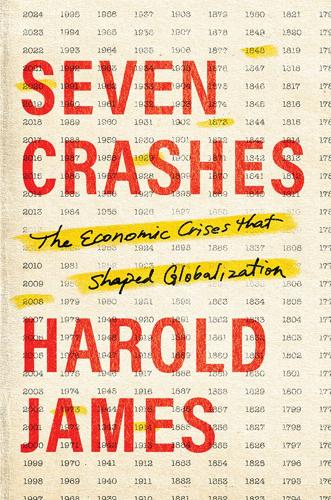
Seven Crashes: The Economic Crises That Shaped Globalization
by
Harold James
Published 15 Jan 2023
Inflation, which has continued to run below our symmetric 2 percent objective, will likely be held down this year by the effects of the outbreak.”8 Business activity closed down, both because of official lockdowns and because many employees withdrew from contagious and dangerous work environments. The “Great Resignation,” in which in the summer of 2021 some four million U.S. workers were leaving their employment every month, appeared to be becoming a long-term phenomenon. There were thus simultaneously an economic and a medical emergency. The immediate and effective financial response, a massive surge of government debt financed by central banks, looked like an immediate miracle, calming the panic, in rather the same way as the effective actions of finance ministries on both sides of the Atlantic in July and August 1914 had immediately contained financial distress.
…
Fed Chair Powell complained that “there’s a tension between our two objectives: maximum employment and price stability. Inflation is high, well above target, and yet there appears to be slack in the labor market.”61 In fact, the slack was a sign of a profound shift: the Great Lockdown and the Great Resignation were producing the Great Dislocation. Elevating Competence and Control Covid posed a profound test of competence: what kind of government could deliver most competently? In an interview after the first months of his presidency, Joe Biden said: “We’re kind of at a place where the rest of the world is beginning to look to China.”

Generations: The Real Differences Between Gen Z, Millennials, Gen X, Boomers, and Silents—and What They Mean for America's Future
by
Jean M. Twenge
Published 25 Apr 2023
As you’ll see in this chapter, Boomers are not always what they have been made out to be: The problems they are often blamed for have affected their own generation just as much as the younger generations pointing their fingers. The largest tranche of Boomers, born in 1957, turned 65 in 2022. With life spans lengthening, many will work past that age; others retired early as part of the “Great Resignation” during the COVID-19 pandemic, creating widespread staffing shortages. It was the first sign of the coming storm: Over the course of the 2020s, for the first time since the earliest of their number arrived in the 1940s, Boomers will begin to cede center stage in business, politics, and education.
…
Those upticks are not, thankfully, the astronomical escalations some predicted for kids’ mental health during the pandemic, but they do suggest continued increases in mental health issues among children and especially among teens. The COVID-19 pandemic has shaped Gen Z’s worldview in ways that will be with them for the rest of their lives. The constant back-and-forth of school closures and event cancellations may have taught them greater flexibility. The Great Resignation of workers in 2021 improved the number of jobs available to them, which could pay off for Gen Z economically for years into the future. But it’s not all good: Gen Z was already more anxious and depressed than previous generations before 2020, and the pandemic may have cemented their mental vulnerability and their decidedly negative view of their country and the world around them.

Slow Productivity: The Lost Art of Accomplishment Without Burnout
by
Cal Newport
Published 5 Mar 2024
This exhaustion with work was also reflected in multiple waves of heavily reported social trends that crested one after another during the pandemic. First there was the so-called Great Resignation. Though this phenomenon encompassed retreats from labor force participation in many different economic sectors, among these many sub-narratives was a clear trend among knowledge workers to downgrade the demands of their careers. The Great Resignation was then followed by the rise of quiet quitting, in which a younger cohort of workers began to aggressively push back on their employers’ demands for productivity. “We are overworked and overstressed, constantly dissatisfied, and reaching for a bar that keeps rising higher and higher,” writes Celeste Headlee in the introduction to Do Nothing.

Working Identity, Updated Edition, With a New Preface: Unconventional Strategies for Reinventing Your Career
by
Herminia Ibarra
Published 17 Oct 2023
The Million-Dollar Question When I speak to audiences about the reinvention process, there is one question that is always sure to come up: Did anyone regret the move to a new career? Were the career changers I studied better off than the ones who stayed put? Ever more relevant today, when our patience for lengthy transitions seems to be on the wane—witness the Great Resignation, when millions of people quit work during and after the pandemic without a next job lined up (instead of taking the safer and more common strategy of staying put in the old job while growing new possibilities on the side)—these are crucial questions. They have no simple answer. Many of the people whose stories make up this book said they made at least one “wrong” move, going from the frying pan into the fire.

Escape From Model Land: How Mathematical Models Can Lead Us Astray and What We Can Do About It
by
Erica Thompson
Published 6 Dec 2022
Pandemic appears not to have been officially used as a stress-test scenario by regulatory bodies, but health insurers at least have certainly had pandemic influenza as a known major possibility for years. Even where scenarios exist, the many and varied downstream impacts of the pandemic that are emerging, from supply-chain disruption and Long Covid to accelerated digitisation and the ‘Great Resignation’, are potentially major economic changes that will not have been factored in. Stress tests in banking are less colourful but include scenarios for economic downturn, changes in interest rates or the failure of another major bank. After the Covid-19 pandemic began, the Bank of England conducted stress tests for the projected downturn and then a set of ‘reverse stress tests’ that assessed how bad things would have to get to jeopardise UK banks’ ability to function.
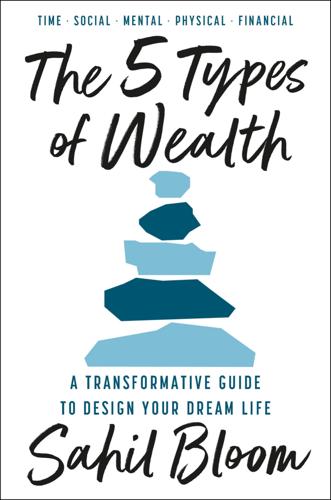
The 5 Types of Wealth: A Transformative Guide to Design Your Dream Life
by
Sahil Bloom
Published 4 Feb 2025
BACK TO NOTE REFERENCE 7 Gallup and Meta, “The Global State of Social Connections,” Gallup.com, June 27, 2024, https://www.gallup.com/analytics/509675/state-of-social-connections.aspx. BACK TO NOTE REFERENCE 8 Volodymyr Kupriyanov, “2021 Study: Do People Actually Regret Moving?,” Hire a Helper (blog), June 3, 2021, https://blog.hireahelper.com/2021-study-do-people-actually-regret-moving/. BACK TO NOTE REFERENCE 9 Eleanor Pringle, “The ‘Great Resignation’ Is Now the ‘Great Regret,’ ” Fortune, February 9, 2023, https://fortune.com/2023/02/09/great-resignation-now-great-regret-gen-z-wish-they-had-not-quit-old-job/. BACK TO NOTE REFERENCE 10 Steve Jobs, “You’ve Got to Find What You Love,” Stanford Report, June 12, 2005, https://news.stanford.edu/stories/2005/06/youve-got-find-love-jobs-says.

The Alternative: How to Build a Just Economy
by
Nick Romeo
Published 15 Jan 2024
As one of the authors wrote later, “On a large scale it is quite probable that part of the success of the early Hitler movement came about because large numbers of unemployed were taken into barracks and kept busy with paramilitary training.”10 Today, the official unemployment rate in Austria, America, and many other developed countries does not include people who have stopped looking for work. But erasing these people from official statistics does not decrease their suffering or address the political dysfunction it often fuels. As the Great Resignation further swells long-term unemployment in countries around the world, some politicians, policymakers, and academics see in Austria’s job guarantee program a way to mobilize a latent workforce, meeting local needs while also reversing the devastating psychological effects of unemployment. YOU HAVE YOUR BREAKFAST, AND THEN: WHAT AM I GOING TO DO ALL DAY?

Empty Vessel: The Story of the Global Economy in One Barge
by
Ian Kumekawa
Published 6 May 2025
The barge that replaced the Vessel and its sister ship, the Vernon C. Bain, has finally closed, the last prison ship in the United States. There are also plans to close Rikers Island itself, but those plans have been repeatedly delayed. The pandemic devastated New York’s incarcerated population, COVID ripped through the city’s jails, and the great resignation spawned a massive staffing shortfall. Every so often, there is talk of jail conditions getting so bad that the federal government will step in and assume management of the system. But Rikers remains open, and as of early 2024, the empty Bain continues to hulk off the South Bronx neighborhood of Hunts Point, at the end of a long service road flanked by barbed wire.